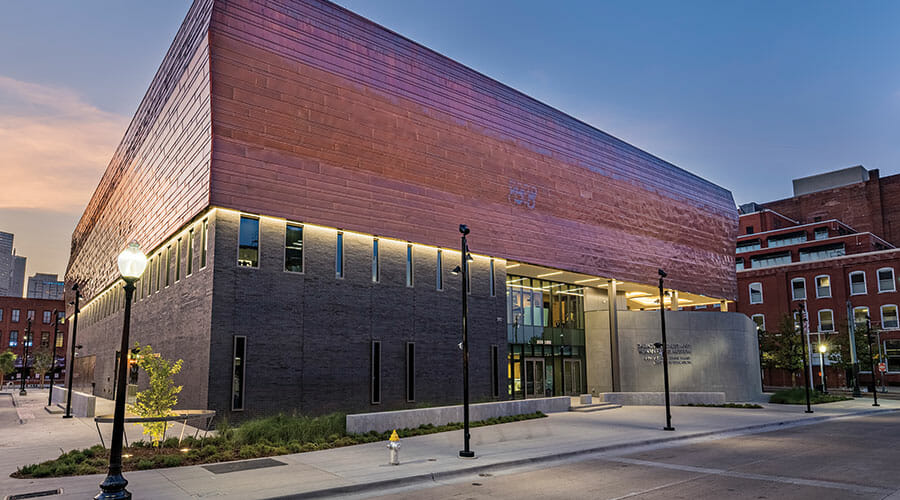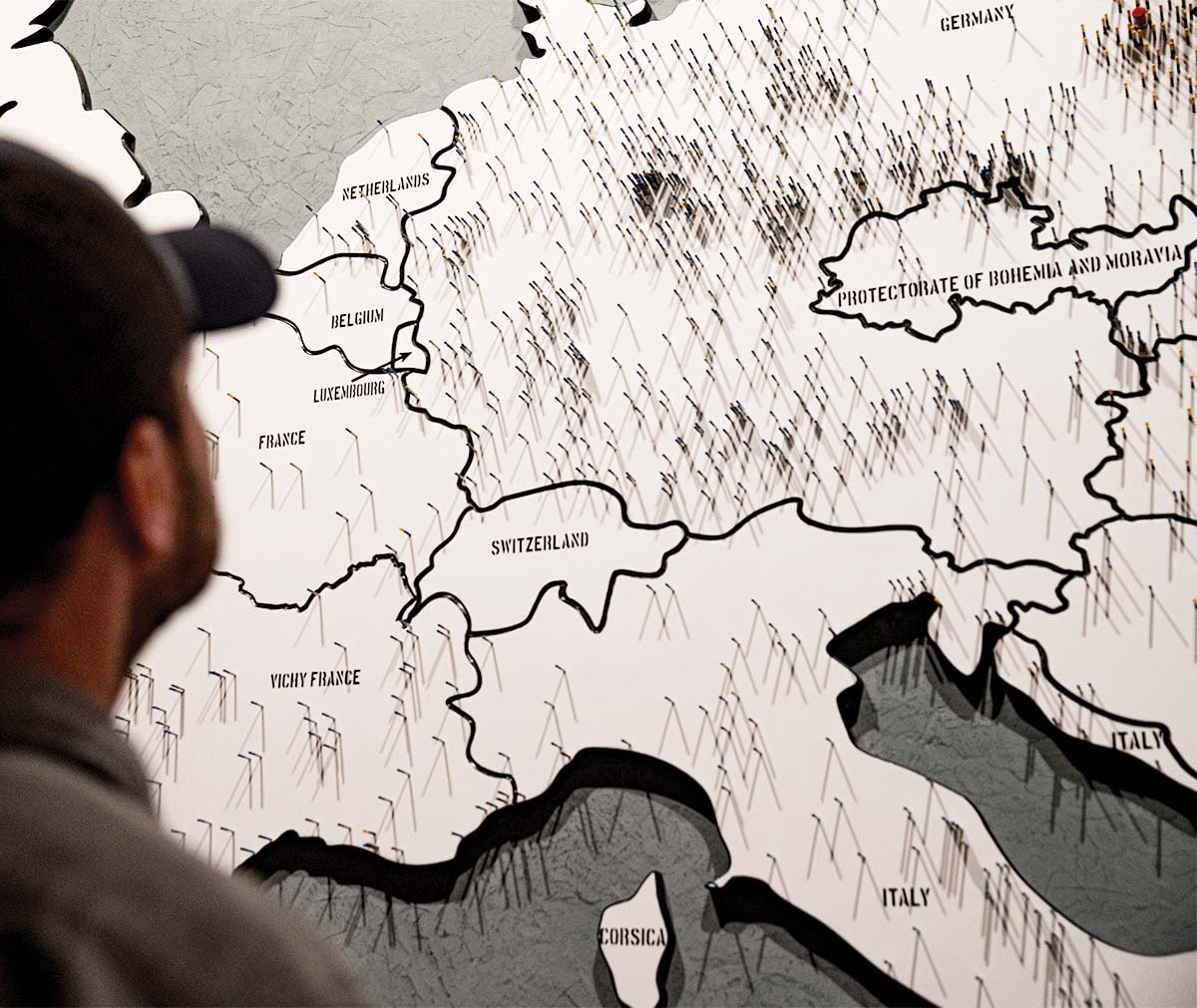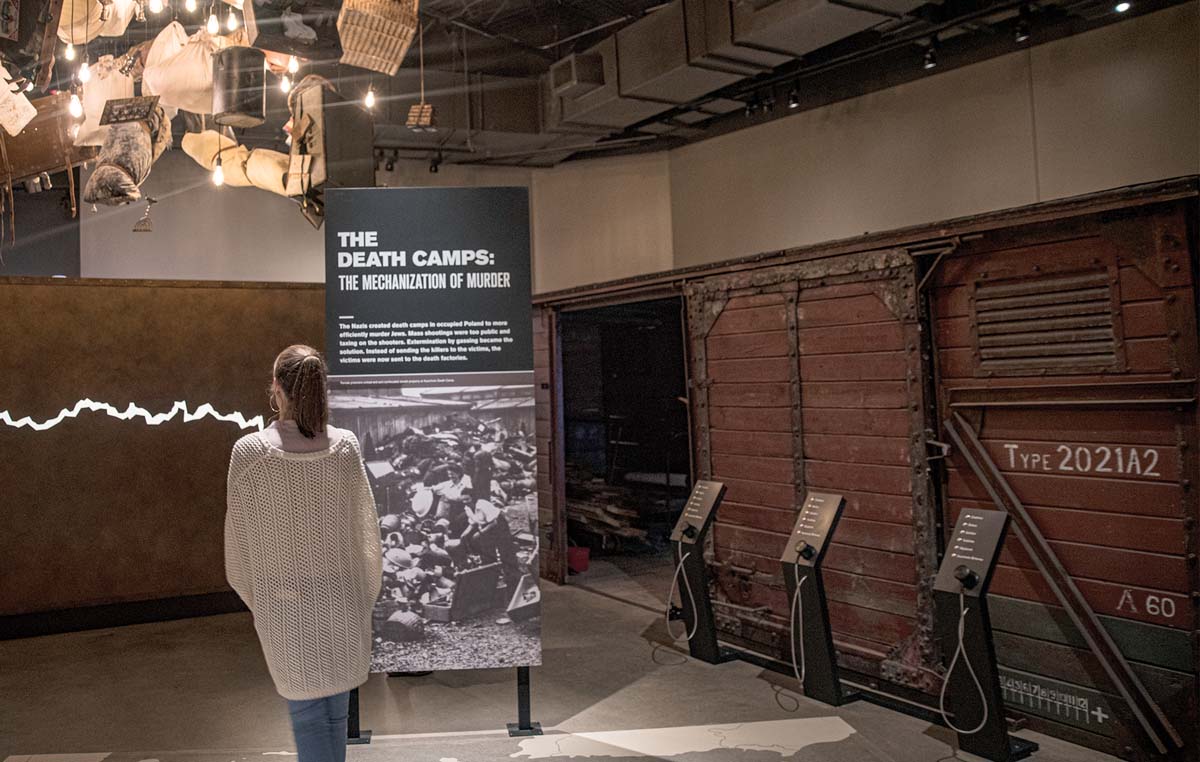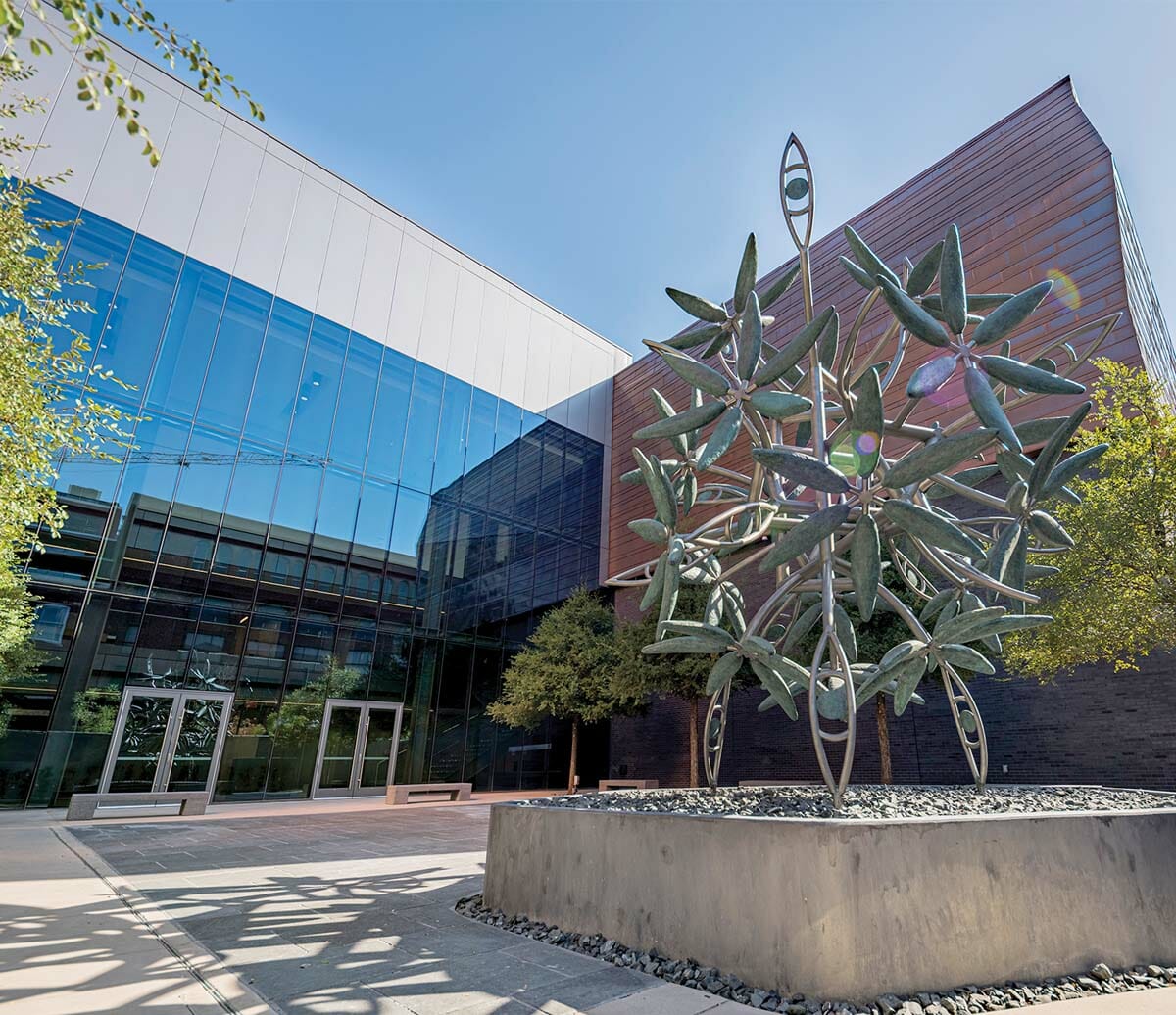
By Marilyn Bailey
Photos courtesy of Dallas Holocaust and Human Rights Museum
A new and improved Dallas Holocaust and Human Rights Museum remembers the past and looks to the future with reverent and thought-provoking exhibits.
e live in an area as museum rich as any great metropolis, especially with its dueling sets of first-rate art institutions. The latest reason to be proud is the new Dallas Holocaust and Human Rights Museum, which offers teaching opportunities, thought-provoking exhibits and many lump-in-the-throat moments.
What was once the Dallas Holocaust Museum shuttered its former space over the summer and reopened this fall in its first stand-alone building. It now boasts five times the floor space, as well as a more expansive and forward-looking mission‚ as reflected in its longer name.
The new building is a blocky modern structure just north of the Sixth Floor Museum at Dealey Plaza in the West End entertainment district. Many of its exhibits are designed with schoolchildren in mind (the museum says it’s appropriate for ages 12 and up), but even those who know the basic history will appreciate the emphasis on teaching and the way visitors are asked to think about their own behavior and biases. Walk with us on our tour.
In the orientation section, visitors are funneled into small groups through a series of rooms and staircase landings to watch brief introductory films that explain the historical background of the Holocaust. It’s a sweeping (and moving) lesson that gallops efficiently through Abraham, the Jews’ enslavement in Egypt and the story of anti-Semitism in Europe. The final wall is covered with family photos from before the Holocaust, supplied by Dallas-Fort Worth survivors.
From here on, you’re free to wander on your own. As the doors open to the main exhibition space, the first thing you hear is Adolf Hitler’s shrill voice in full cry, delivering a speech. Glance to the left, and you see fluted white columns and red swastika banners that suggest the fascist architecture and symbolism of Nazi Germany. This is the Holocaust/Shoah Wing. Displays explain the rise of Hitler, the progression of World War II and Germany’s occupation of various countries. You learn about other groups that were targeted in the Holocaust (gays, Roma, Jehovah’s Witnesses, the disabled), and about how the Jews’ experience varied from nation to nation. Denmark managed to save 90 percent of its Jews. In other nations, the native population’s own anti-Semitism contributed to far more tragic outcomes. Here and throughout the museum, there’s a lot to read. But there are rich audio and video experiences, too, with witnesses and survivors telling their stories.
A separate gallery devoted to death camps is marked by its dramatic entrance: You walk through an actual German boxcar of World War II vintage — the kind the Nazis used to transport people to the camps. You can choose to bypass the gallery beyond, but know that the most graphic images are behind a cleverly designed screen with a narrow cutout — you have to peer in to see them. The surrounding wall panels tell the horrors of Auschwitz, Bergen-Belsen and other camps.
After the thorough and bracing history of the Holocaust comes the Human Rights Wing. The 10 stages of genocide are each illustrated by focusing on what happened in Rwanda, Armenia, the former Yugoslavia and other countries. Each display is at once a history lesson and an imposing floor-to-ceiling art piece with visual meanings to puzzle out. And each is illustrated with an impressive graphic novel resting on a stand in front. It would take hours to grasp it all.
Next, the Pivot to America Wing is devoted to the rights struggles of various groups in the United States. You’ll meet “upstanders,” people who opposed genocides at various stages and stood up for basic human and civil rights. These include Lyndon Johnson and Barbara Jordan for their civil rights achievements, and Fort Worth’s Edna Gladney for her work on behalf of adopted children and the working poor. In the interactive Beyond Tolerance Theater, you’re asked to test your own biases and assumptions, and consider how you might be an upstander, too.
In the Dimensions in Testimony Theater, visitors can ask questions of a real Holocaust survivor presented in life-sized holographic form. His answers to 1,000 questions are called up via voice-activation technology, so that future museumgoers can have the feeling of talking with a survivor long after the World War II generation has passed on. It’s a high-tech marvel designed by the USC Shoah Foundation.
Engaging exhibits are as simple as the affecting art piece found near an elevator entrance: Railroad (2018) by Chul-Hyun Ahn depicts a railway bed that recedes to a vanishing point in the dark.
Another is the Memorial & Reflection Room, a soothing candlelit space that invites visitors to honor local survivors and their families, and all those who perished.
The museum is a shattering and thought-provoking experience that’s not all despair. It arms viewers with a concrete sense of what each of us can do to uphold human rights and oppose atrocities with clear eyes.
THE DETAILS
Dallas Holocaust and Human Rights Museum Open daily (except Thanksgiving, Christmas Day, New Year’s Day, Yom Kippur and both Rosh Hashana days). Book tickets online ($12-$16); 300 N. Houston St., 214-741-7500, dhhrm.org.



